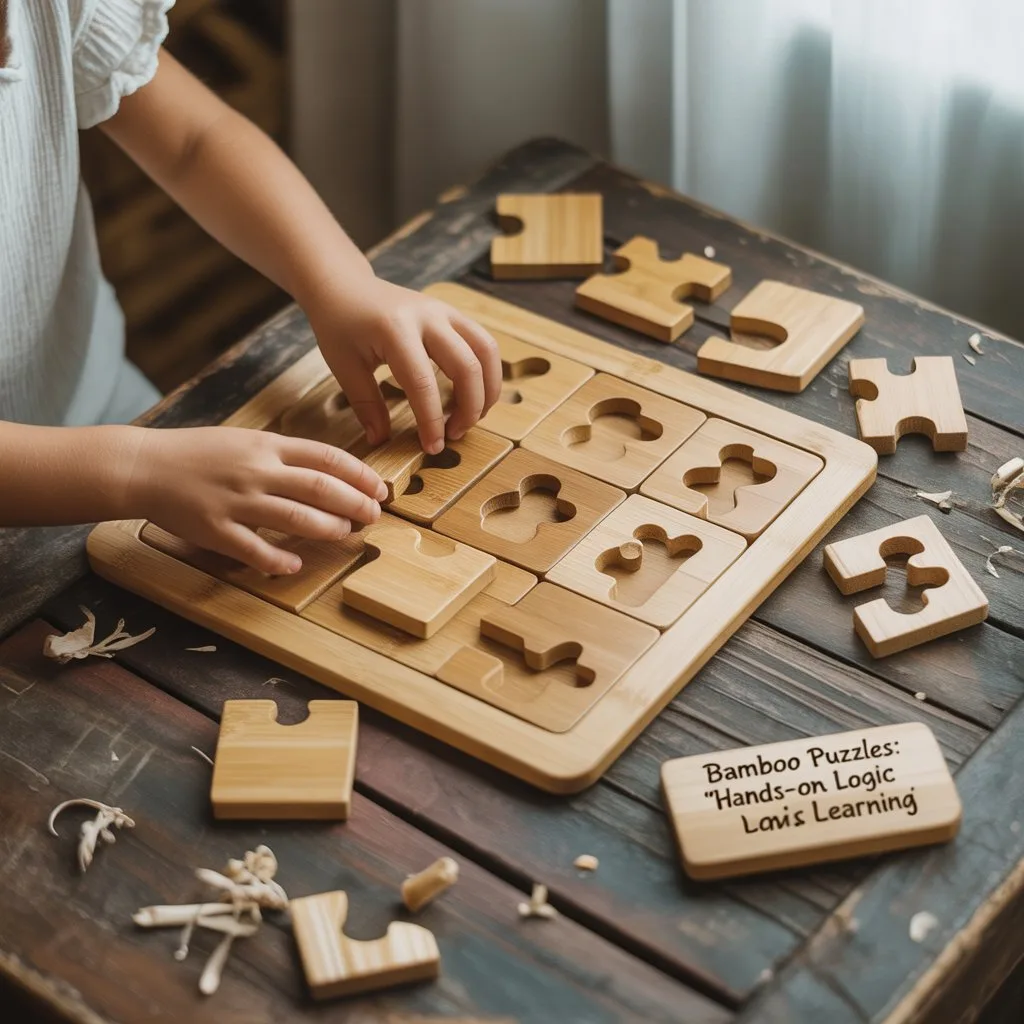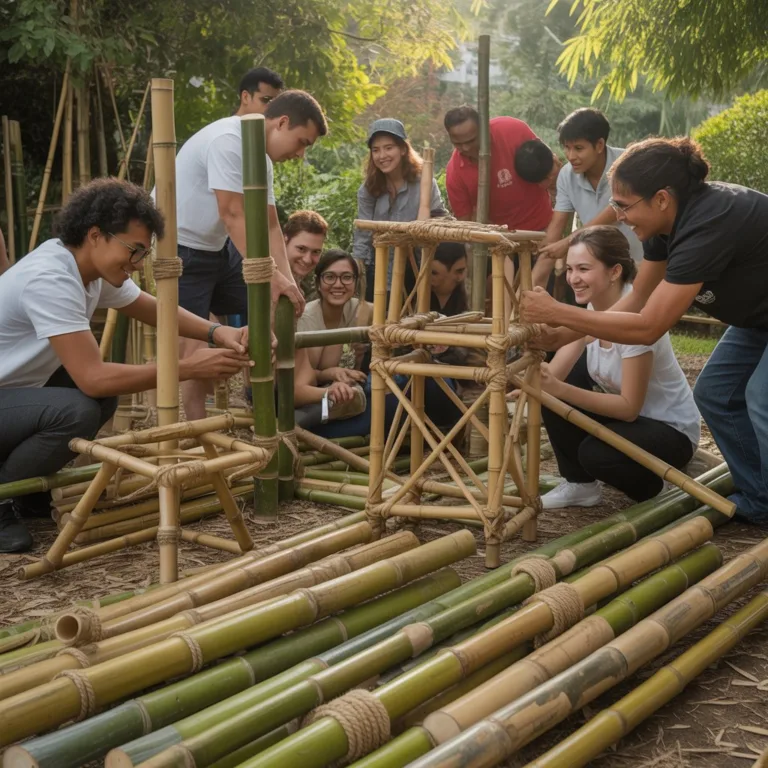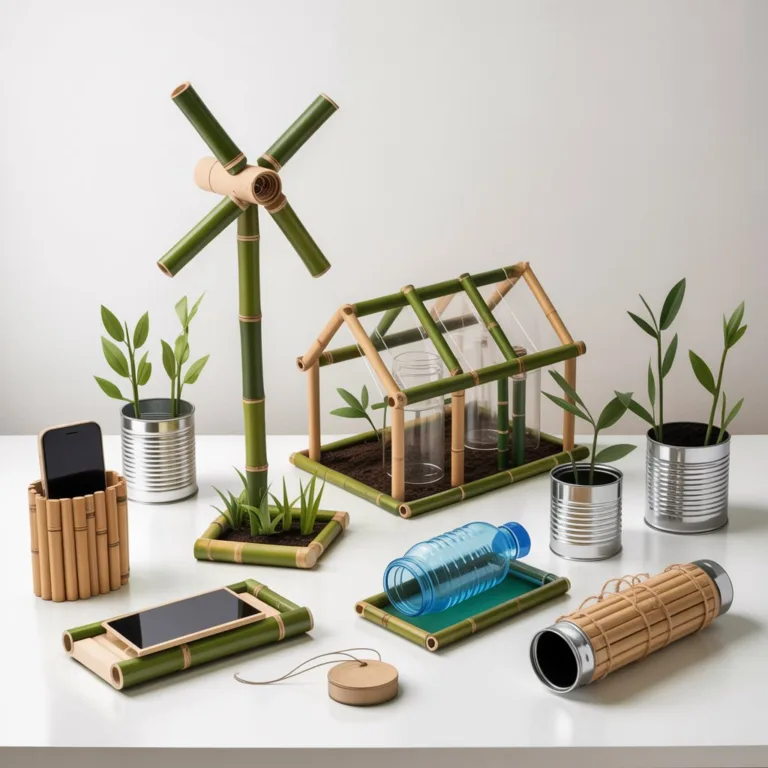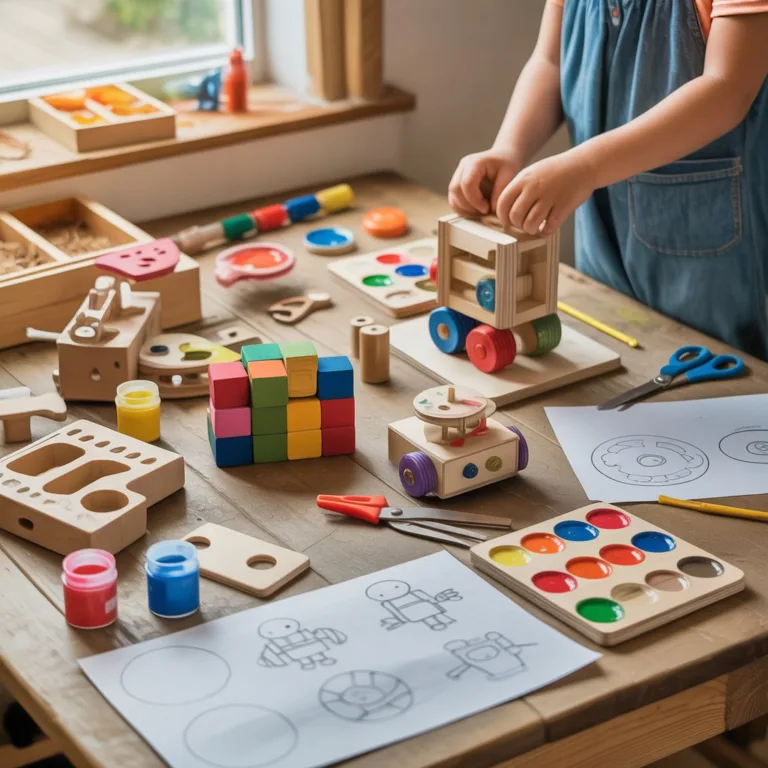Bamboo puzzles are more than just beautiful eco-friendly toys — they are powerful tools for developing logical thinking, patience, and problem-solving skills in people of all ages. Made from natural, renewable materials, these puzzles not only challenge the mind but also promote sustainable practices and mindful learning. Whether used in classrooms, workshops, or at home, bamboo puzzles combine fun with education in a tactile and environmentally responsible way.

Why Bamboo Puzzles Are Special
Unlike plastic or metal puzzles, bamboo puzzles stand out for their natural texture, lightweight feel, and minimal environmental impact. Bamboo is a fast-growing renewable resource, making it an excellent material for sustainable crafts and educational products. Its strength and durability ensure that each puzzle can withstand years of use without losing shape or color.
Beyond their eco-friendly appeal, bamboo puzzles engage the senses. The smooth surface and subtle scent of bamboo create a calming experience that encourages focus and mindfulness — a rare quality in modern, screen-heavy learning environments.
Building Logical Thinking Through Play
Bamboo puzzles come in various shapes and difficulty levels, from simple cube assemblies to complex interlocking structures. Each design encourages learners to use reasoning, spatial awareness, and patience. Solving them requires thinking several steps ahead, testing hypotheses, and recognizing patterns — the same mental processes used in mathematics, engineering, and science.
For example, when working with a bamboo burr puzzle (a common type consisting of interlocking wooden sticks), a learner must analyze how each piece interacts with the others. This trial-and-error process enhances critical thinking and resilience, as each attempt provides new insight into how the puzzle functions.
Teachers and parents often notice that students who engage regularly with logic-based games like bamboo puzzles show improved concentration and problem-solving abilities in other areas of study as well.
Educational Benefits for All Ages
Bamboo puzzles offer learning opportunities across different age groups:
- For children, they support fine motor development and introduce basic engineering principles. The tactile nature of bamboo helps children understand how shapes fit together, reinforcing early math and geometry concepts.
- For teens and adults, these puzzles serve as effective brain-training tools. They stimulate both the analytical left brain and the creative right brain, promoting balanced cognitive growth.
- For seniors, bamboo puzzles provide mental exercise that can help maintain memory and prevent cognitive decline. The act of physically manipulating the pieces keeps hands active while the mind stays sharp.
Educators often integrate bamboo puzzles into STEM or environmental education programs. They make excellent classroom resources for hands-on learning and can even be used in team challenges that promote collaboration and communication.
Eco-Friendly Craftsmanship and Mindful Design
Bamboo puzzles symbolize the fusion of creativity and sustainability. Crafting them involves careful design and precision cutting to ensure each piece fits perfectly. The use of non-toxic finishes keeps the puzzles safe for users of all ages, aligning with the growing demand for sustainable educational materials.
Choosing bamboo over synthetic materials not only reduces waste but also supports industries that prioritize renewable resources. Many artisans and small businesses produce handmade bamboo puzzles, combining traditional woodworking skills with innovative design ideas.
By purchasing or crafting bamboo puzzles, individuals contribute to a circular economy — one that values quality, longevity, and respect for nature.
Making Your Own Bamboo Puzzle
Creating a bamboo puzzle at home can be a rewarding DIY project that combines craftsmanship and learning. While some designs require advanced woodworking skills, simpler models can be made with basic tools and bamboo sticks or dowels.
Start by choosing a design, such as a cube or pyramid puzzle. Sketch each piece carefully, keeping dimensions consistent. Cut and sand the bamboo pieces, ensuring smooth edges for safe handling. Assemble them piece by piece, testing the fit and making small adjustments where necessary.
This process fosters patience, attention to detail, and problem-solving — the same skills needed to solve the puzzle once it’s complete. It also connects makers to the materials they use, reinforcing the importance of sustainable choices in crafting and learning.
Incorporating Bamboo Puzzles into Learning Spaces
Teachers and parents can use bamboo puzzles to introduce concepts like geometry, physics, and logical reasoning in a fun and interactive way. They can set up puzzle stations in classrooms, libraries, or activity rooms, allowing learners to explore freely.
To deepen the experience, consider pairing the puzzles with reflective questions such as:
- What strategy helped you the most when solving this puzzle?
- Did you notice a pattern that made the puzzle easier to complete?
- How might this problem-solving process apply to real-life situations?
Such discussions transform a simple activity into a meaningful lesson about perseverance, analysis, and creativity.
The Mindful Learning Experience
In a fast-paced digital age, bamboo puzzles provide a refreshing pause. They invite learners to slow down, think deeply, and engage with the physical world. This tactile learning helps develop patience and mindfulness — qualities that enhance focus not just during puzzle-solving but in everyday tasks as well.
Engaging with bamboo puzzles also promotes sustainability awareness. When students learn through eco-friendly materials, they internalize the values of care, resourcefulness, and environmental responsibility.
Encouraging Exploration and Curiosity
Bamboo puzzles spark curiosity and imagination. Each puzzle holds a hidden pattern or mechanism waiting to be discovered, encouraging continuous exploration. For young learners, this sense of discovery reinforces a positive attitude toward challenges. For adults, it provides a relaxing, meditative experience that sharpens the mind while offering a sense of accomplishment.
By incorporating bamboo puzzles into your daily routine, classroom, or creative projects, you nurture both intellectual growth and environmental consciousness. These timeless games remind us that learning doesn’t always require screens or technology — sometimes, all it takes is a few well-crafted pieces of bamboo and a curious mind.
Whether you’re an educator, parent, or DIY enthusiast, bamboo puzzles offer an inspiring way to blend sustainability, creativity, and logic learning. They teach us to think critically, act responsibly, and appreciate the simple beauty of natural materials. Dive into the world of bamboo puzzles and rediscover how playful thinking can build a smarter, greener future.

Elena Mora is a creative educator and eco-craft enthusiast who specializes in bamboo musical instruments and sustainable toys for children. She believes that hands-on learning through play teaches kids about creativity, music, and environmental responsibility.



